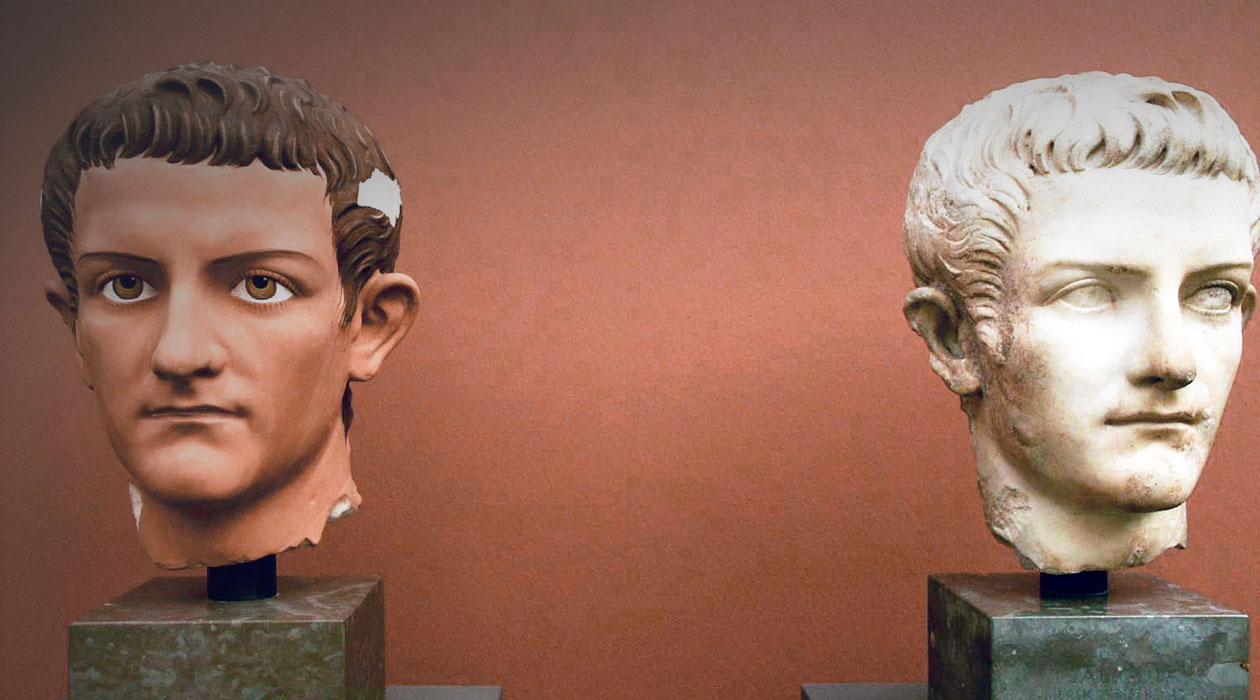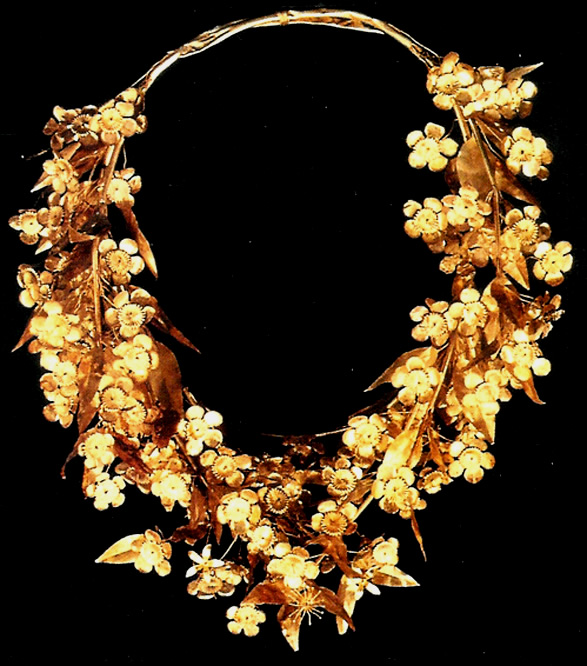A guest blog post by Zoë Eisenman
[Editor’s note: Zoë will be leading The Fall of the House of Oedipus at our summer seminar program, Toronto Pursuits. Join Zoë in Toronto to take a fresh look at one of the most famous families in the history of literature. Why do they fall so far, so fast? For Zoë, at the centre of all these plays is the issue of knowledge—what we think we know, what we can know, and what we actually know. In this post, she describes her visit to a new exhibit on ancient Greece.]
This past week I accompanied a group of twelve University of Chicago Basic Program alumni students on a visit to The Greeks: Agamemnon to Alexander the Great, the new exhibit at Chicago’s Field Museum. I had been looking forward to the exhibit because it contained many artifacts that have never traveled outside of Greece, and in particular many items from the recent finds in Macedonia. I was not disappointed! We had a great time immersing ourselves in the ancient Greek world.
The exhibit is structured chronologically, so it is possible to see the development of Greek culture over time from prehistory to the Hellenistic period. It includes all kinds of items, from ceramics and stone sculpture to metal weapons and armor to gold jewelry. The museum did an excellent job of organizing the exhibit. The displays are well lit and easy to see, with plenty of space for people to gather around and get close looks at the artifacts.

In addition to the description of the object itself, there were plaques and videos giving historical context and other useful information. The students particularly enjoyed the maps, showing where the artifacts were found in relation to other places and events in Greece, and the ‘how to’ video that showed how some of the metalwork was done in ancient times. There was also a video that demonstrated what the marble statues would have looked like when they were painted, which was an eye-opener for the students. Most people are used to seeing Greek statues as stark white figures, so to see the gaudy colors on Athena was a bit of a shock!

Many of the items on display were related to the Homeric poems. We saw an ivory head showing a boar tusk helmet like Odysseus wore on his raid with Diomedes, vases depicting Odysseus blinding Polyphemus and Achilles dragging Hector behind his chariot, swords and tripods, and a reproduction of the gold Mask of Agamemnon found by Schliemann at Mycenae. There were ceramic tablets showing Linear A and Linear B, the writing systems used by the Minoans and Mycenaeans. There was also a section devoted to the Athenian democracy, with jury voting tokens, a water clock, and a vote tally stele. These brought back memories of Socrates’ trial in the Apology and the debates in the Assembly that we read about in Thucydides. There was also a selection of funeral stelae from Athens.

from King Philip II’s burial site
As I said at the beginning, though, the things I was most excited to see were the Macedonian artifacts. In 1977, the burial sites of King Phillip II of Macedon and his family were discovered, and since then there have been extensive finds from undisturbed tombs in the region stretching back to the 9th and 10th centuries BC. They include particularly rich artifacts, since the sites have never been plundered. Macedon is also close to Thrace, where there were gold mines in antiquity. The exhibit included many gold objects, particularly from women’s tombs, including two gold wreath crowns with delicate three-dimensional flowers and leaves, done in a very naturalistic style that were amazing in their detail. Headbands, hairpins, dress pins, earrings, mirrors, perfume and oil flasks, and cosmetic boxes also gave a glimpse into the life of women of royal status. For the men, there were helmets decorated with gold and with gold face plates that were specially made for the tomb. The artistry of the Macedonian pieces belies the rough and warlike image you get in Greek literature about that culture. At least in the palace, these Macedonians lived a life surrounded by art and luxury.
If you happen to be in Chicago, I would highly recommend checking out this exhibit, and its ancillary exhibit at the National Hellenic Museum. The Field Museum exhibit runs through April 10.
– Zoë
Photo credits: Marble sculpture and polychrome rendition, Tracking Colour project at Glyptotek; Mask of Agamemmnon, DieBuche at the German language Wikipedia, via Wikimedia Commons; diadem (featured photo), Snezhana Simeonova on TrekEarth


